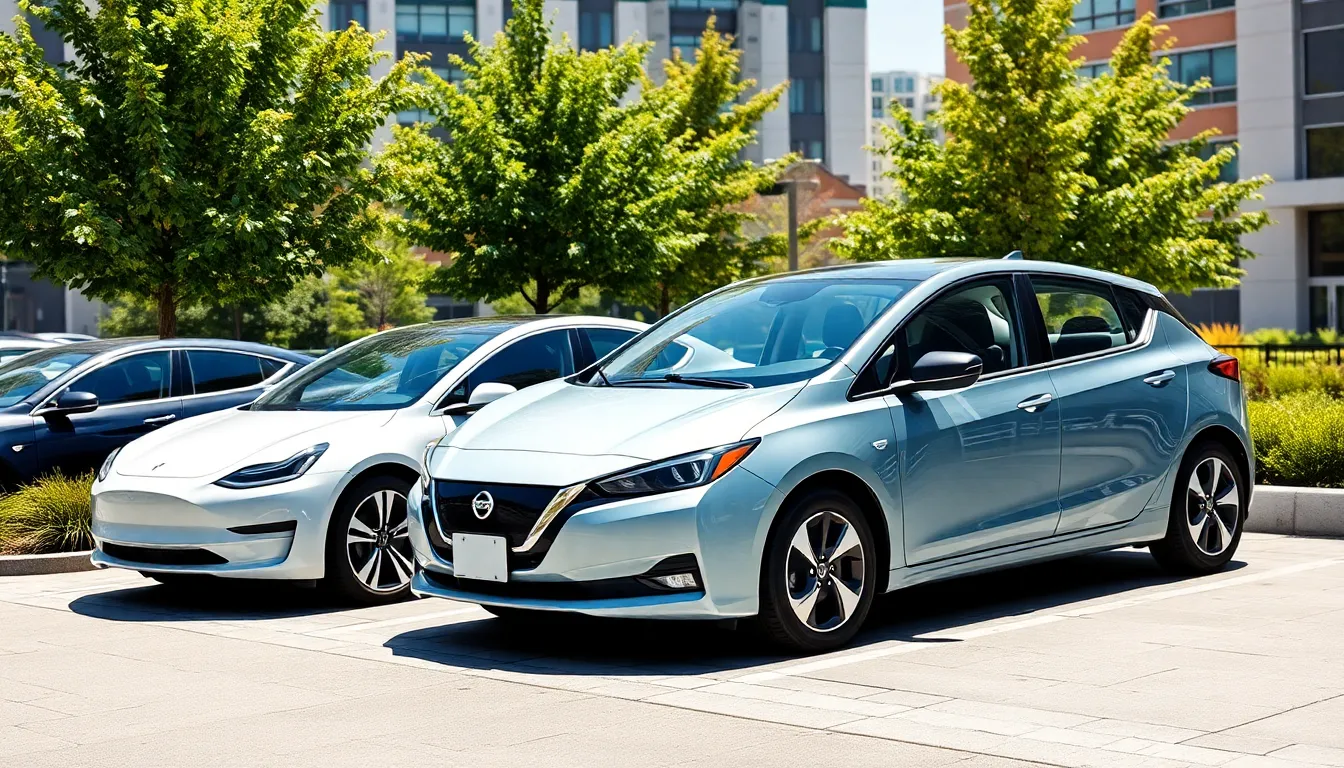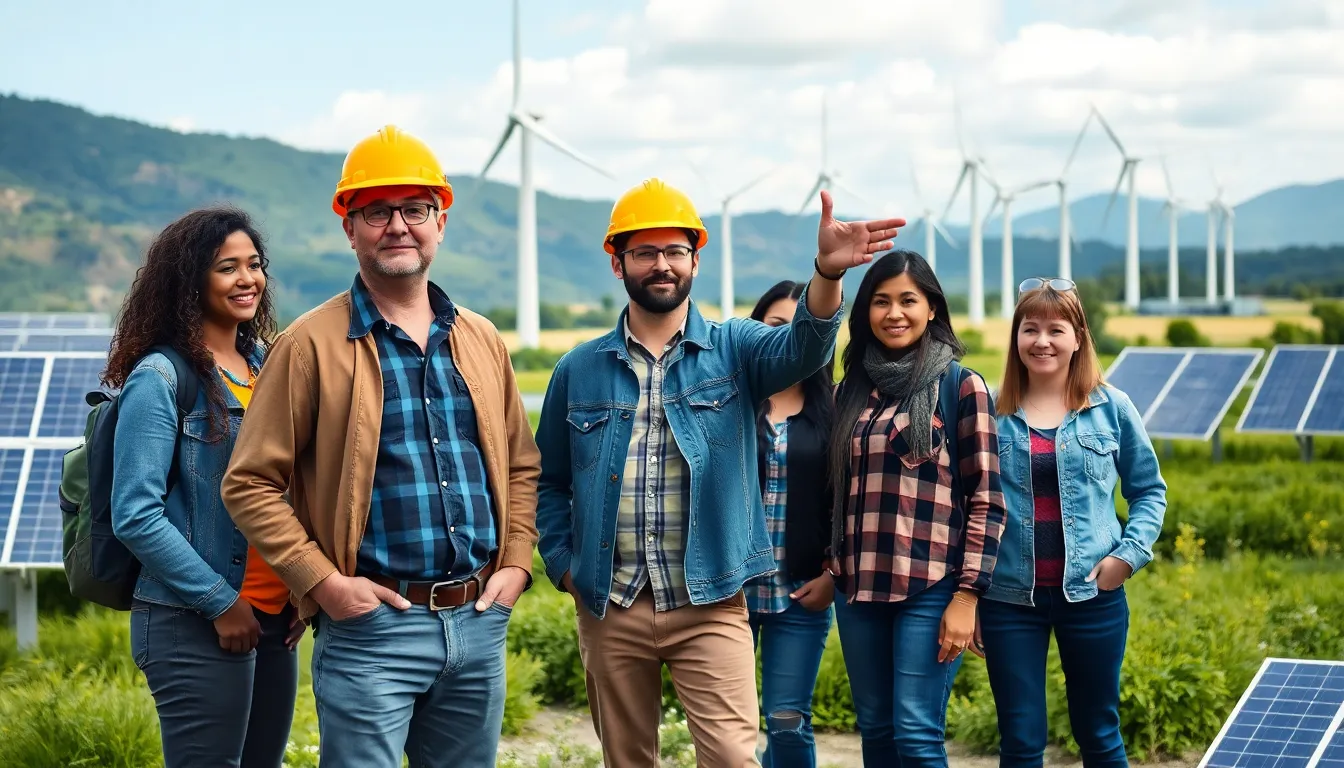As the world grapples with climate change and air pollution, low-emission vehicles (LEVs) have emerged as a vital solution. These vehicles promise to reduce greenhouse gas emissions and improve air quality, making them an essential part of sustainable transportation. With advancements in technology, LEVs now offer drivers a practical and eco-friendly alternative to traditional gasoline-powered cars.
From electric vehicles to hybrids, the range of options available is expanding rapidly. Consumers are increasingly aware of their environmental impact, leading to a surge in demand for cleaner transportation. Understanding the benefits and types of low-emission vehicles can help drivers make informed choices that align with their values and contribute to a healthier planet.
Table of Contents
ToggleOverview of Low-Emission Vehicles
Low-emission vehicles (LEVs) play a crucial role in mitigating climate change and enhancing urban air quality. LEVs primarily consist of electric vehicles (EVs) and hybrid vehicles, both designed to emit significantly fewer greenhouse gases compared to conventional gasoline-powered vehicles.
Electric vehicles operate solely on electricity, effectively eliminating tailpipe emissions. Hybrid vehicles combine electric and gasoline power, optimizing fuel efficiency and reducing emissions. The integration of advanced technologies in these vehicles further minimizes pollutants, contributing to cleaner air in densely populated areas.
The demand for LEVs is increasing as consumers become more environmentally conscious. Incentives, such as government rebates and tax credits, drive adoption. According to the International Energy Agency (IEA), global sales of electric vehicles reached 6.6 million units in 2021, marking a 108% increase compared to 2020.
Various types of LEVs include:
- Battery Electric Vehicles (BEVs): These vehicles rely entirely on electric power, utilizing large batteries for propulsion.
- Plug-in Hybrid Electric Vehicles (PHEVs): PHEVs can operate on electric power or gasoline, with the ability to recharge their batteries.
- Hybrid Electric Vehicles (HEVs): HEVs use a combination of electric and gasoline engines, but cannot be plugged in for recharging.
The transition to low-emission vehicles aids in achieving sustainable transportation goals, promoting long-term environmental and health benefits. Awareness of LEVs equips consumers to make informed choices, supporting initiatives for a healthier planet.
Types of Low-Emission Vehicles

Various types of low-emission vehicles (LEVs) exist to cater to different consumer needs and preferences. The most common categories include electric vehicles and hybrid vehicles.
Electric Vehicles
Electric vehicles (EVs) operate exclusively on electricity, utilizing rechargeable batteries to power electric motors. EVs produce zero tailpipe emissions, significantly reducing greenhouse gases in urban areas. Notable examples of EVs include the Tesla Model 3 and the Nissan Leaf. EVs typically fall into three main categories:
- Battery Electric Vehicles (BEVs): BEVs solely rely on electric power, featuring large battery packs for extended range.
- Plug-in Hybrid Electric Vehicles (PHEVs): PHEVs combine electric propulsion with a gasoline engine, offering flexibility for longer trips.
- Hybrid Electric Vehicles (HEVs): HEVs feature both an electric motor and a gasoline engine but don’t plug in for charging; they use regenerative braking and engine power instead.
According to the International Energy Agency (IEA), global sales of EVs surged to 6.6 million units in 2021, marking a 108% increase from the previous year.
Hybrid Vehicles
Hybrid vehicles (HVs) integrate both electric and gasoline power, promoting better fuel efficiency and lower emissions. These vehicles automatically transition between their electric motor and gasoline engine, optimizing energy consumption based on driving conditions. The main types of hybrid vehicles include:
- Full Hybrids: Full hybrids can operate on electric power alone or utilize both power sources simultaneously.
- Mild Hybrids: Mild hybrids rely on a combination of electric assist and gasoline engines but cannot function solely on electricity.
Hybrid vehicles provide advantages like lower fuel costs and compliance with emissions regulations while assisting in reducing dependence on fossil fuels. Popular models, such as the Toyota Prius and Honda Insight, showcase the benefits of this technology.
Benefits of Low-Emission Vehicles
Low-emission vehicles (LEVs) provide significant advantages that enhance environmental health and offer economic benefits. Understanding these advantages helps consumers make informed decisions about their vehicle choices.
Environmental Impact
Low-emission vehicles effectively reduce greenhouse gas emissions, contributing to climate change mitigation. Electric vehicles (EVs) produce zero tailpipe emissions, while hybrid vehicles utilize both electric and gasoline power to optimize efficiency. According to a 2021 report by the International Energy Agency, EVs alone helped avoid approximately 1.5 gigatons of CO2 emissions globally. LEVs also improve air quality by decreasing harmful pollutants, such as nitrogen oxides and particulate matter, which are prevalent in traditional vehicles. A shift to LEVs leads to healthier urban environments and promotes sustainable ecosystems.
Economic Advantages
Low-emission vehicles offer substantial economic benefits. Operating costs for LEVs typically remain lower than those of conventional gasoline vehicles. For instance, electricity is often cheaper than gasoline, resulting in savings of up to 50% in fuel expenses. Additionally, many governments provide incentives like tax credits, rebates, or grants for purchasing LEVs, further reducing the initial purchase price. Insurance rates also tend to be lower for LEVs due to their safety features and high technology standards. Over time, these economic advantages can result in significant savings for consumers depending on their driving habits.
Challenges Facing Low-Emission Vehicles
Various challenges hinder the widespread adoption of low-emission vehicles (LEVs). These obstacles primarily stem from infrastructure limitations and consumer awareness.
Infrastructure Limitations
Infrastructure limitations significantly impact the growth of LEVs. A lack of widespread charging stations affects electric vehicle (EV) convenience, leading to range anxiety among potential buyers. According to the U.S. Department of Energy, as of 2022, there were approximately 134,000 public charging outlets in the U.S. This number falls short of the requirements for extensive EV adoption, particularly in rural areas. Additionally, slow charging speeds at some stations hinder long-distance travel. Upgrading the electrical grid to handle increased demand poses financial and logistical hurdles, further complicating the establishment of necessary infrastructure.
Consumer Awareness
Consumer awareness plays a critical role in influencing low-emission vehicle adoption. Many consumers remain uninformed about the benefits and functionalities of LEVs. According to a 2021 survey by the Pew Research Center, only 27% of Americans reported high confidence in EV technology. Misconceptions about the performance, cost, and environmental impact of LEVs persist. Effective educational campaigns can help to dispel these myths and promote understanding. Additionally, highlighting government incentives and rebates can motivate potential buyers, driving the market for low-emission vehicles further.
The shift towards low-emission vehicles is vital for a sustainable future. As awareness grows and technology advances, consumers are increasingly recognizing the benefits of electric and hybrid options. These vehicles not only reduce harmful emissions but also offer significant economic advantages.
Overcoming infrastructure challenges and enhancing consumer education will be crucial for wider adoption. By addressing misconceptions and promoting available incentives, the transition to LEVs can accelerate. Embracing low-emission vehicles represents a proactive step toward cleaner air and a healthier planet for future generations.






